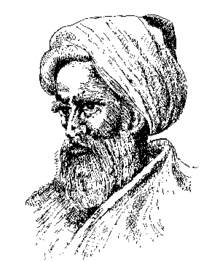Ibn al-Haytham
| Hasan Ibn al-Haytham (Alhazen) |
|
|---|---|

Alhazen (Ibn al-Haytham)
|
|
| Born |
c. 965 CE(354 AH) Basra, Buyid Emirate |
| Died |
c. 1040 (aged 75)(430 AH) Cairo, Fatimid Caliphate |
| Residence | |
| Fields | |
| Known for | Book of Optics, Doubts Concerning Ptolemy, Alhazen's problem, Analysis,Catoptrics,Horopter, Moon illusion, experimental science, scientific methodology,visual perception, empirical theory of perception, Animal psychology |
| Influences | Aristotle, Euclid, Ptolemy, Galen, Banū Mūsā, Thābit ibn Qurra, Al-Kindi, Ibn Sahl, Abū Sahl al-Qūhī |
| Influenced | Omar Khayyam, Taqi ad-Din Muhammad ibn Ma'ruf, Kamāl al-Dīn al-Fārisī, Averroes, Al-Khazini, John Peckham, Witelo, Roger Bacon,Kepler |
Abū ʿAlī al-Ḥasan ibn al-Ḥasan ibn al-Haytham (Arabic: أبو علي، الحسن بن الحسن بن الهيثم; Persian: بوعلی محمد بن حسن بن هیثم c. 965 – c. 1040 CE), also known by the Latinization Alhazen or Alhacen, was an ArabMuslimscientist, mathematician, astronomer, and philosopher. Ibn al-Haytham made significant contributions to the principles of optics, astronomy, mathematics and visual perception. He was the first to explain that vision occurs when light bounces on an object and then is directed to one's eyes. He spent most of his life close to the court of the Fatimid Caliphate in Cairo and earned his living authoring various treatises and tutoring members of the nobilities.
Ibn al-Haytham is widely considered to be one of the first theoretical physicists, and an early proponent of the concept that a hypothesis must be proved by experiments based on confirmable procedures or mathematical evidence—hence understanding the scientific method 200 years before Renaissance scientists.
In medieval Europe, Ibn al-Haytham was honored as Ptolemaeus Secundus (the "Second Ptolemy") or simply called "The Physicist". He is also sometimes called al-Baṣrī after his birthplace Basra in Iraq, or al-Miṣrī ("of Egypt").
...
Wikipedia
